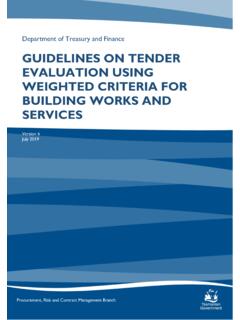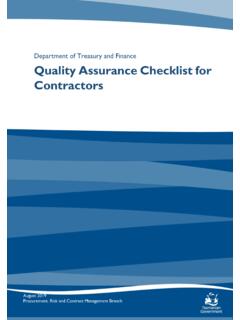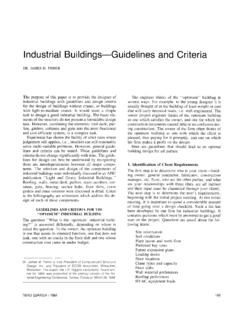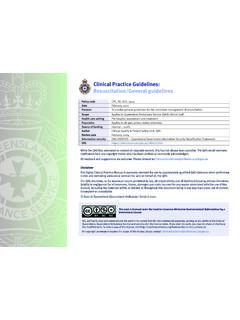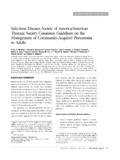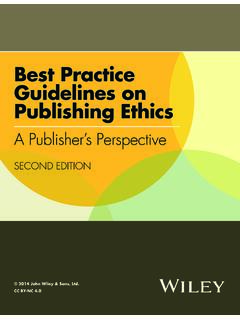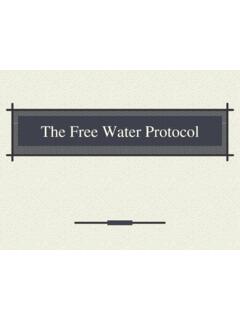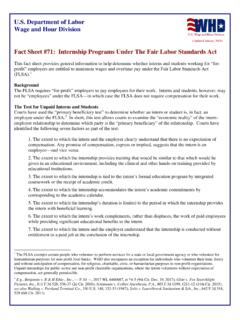Transcription of Guidelines on Tender Evaluation using Weighted Criteria ...
1 Procurement, Risk and Contract Management Branch Department of Treasury and Finance Guidelines ON Tender Evaluation using Weighted Criteria FOR BUILDING WORKS AND SERVICES Version 6 July 2019 Guidelines ON Tender Evaluation using Weighted Criteria FOR BUILDING WORKS AND SERVICES 1 Department of Treasury and Finance Title: Guidelines on Tender Evaluation using Weighted Criteria for Building Works and Services Government of Tasmania ISBN 978-0-7246-5514-4 (PDF) Excerpts from this publication may be reproduced, with appropriate acknowledgement, as permitted under the Copyright Act. Contact: Department of Treasury and Finance Procurement and Property Branch GPO Box 147 Hobart Tasmania 7001 Australia Telephone: (03) 6166 4444 Email: Website: Guidelines ON Tender Evaluation using Weighted Criteria FOR BUILDING WORKS AND SERVICES 2 Department of Treasury and Finance Contents 1.
2 Introduction .. 3 2. Principles .. 3 3. Selection Criteria .. 3 Relevant experience .. 4 Past performance .. 4 Technical Skills .. 4 Management Skills and Systems .. 4 Resources .. 5 Methodology .. 5 Price .. 5 4. Weightings .. 6 Scoring Non-Price/Qualitative Criteria .. 6 Scoring Price/Quantitative 7 Local SME industry impact weighting .. 8 Total Scores .. 8 Guidelines ON Tender Evaluation using Weighted Criteria FOR BUILDING WORKS AND SERVICES 3 Department of Treasury and Finance 1. Introduction Government agencies should aim to achieve value for money whenever they procure building and construction industry services.
3 Generally speaking, a Tender Evaluation process using Weighted Criteria should be adopted to determine the Tender that offers the best value. A system of weighting the selection Criteria is used to compare tenders and identify the tenderer with the best performance record in terms of time, cost and value for money. 2. Principles The Weighted Criteria Tender assessment process is based on the following principles: selection Criteria that reflect the critical elements of the project; weightings that reflect the relative importance of selection Criteria ; scores that are based on information submitted with the Tender bid; and normalising the non price Criteria and the Tender price before applying the weightings to allow for the true effect and advantage of the weighting system.
4 3. Selection Criteria Selection Criteria are intended to assess the competence of the tendering organisations to achieve the required project outcome and are used to rate each of the tenders. Examples of selection Criteria include: relevant experience; appreciation of the task; past performance; management and technical skills; resources; management systems; methodology; and price. The Criteria need to be relevant to the project, they must be able to be evaluated in a meaningful way and scored. When weighting non price Evaluation Criteria , agencies should ensure that any difference in scores between a good submission and a satisfactory submission does not overshadow a substantial price difference.
5 Agencies assessing submissions with a substantial price difference must ultimately justify their selection in terms of value for money if the higher priced Tender submission gets the higher score. Guidance information on some of the example Criteria is set out below. Guidelines ON Tender Evaluation using Weighted Criteria FOR BUILDING WORKS AND SERVICES 4 Department of Treasury and Finance RELEVANT EXPERIENCE Previous experience of the tenderer needs to be assessed in relation to the fields of expertise required to achieve the intended outcomes of the project. Recent experience is more valuable than historic experience.
6 The company s previous experience in technical areas comparable to the tendered project, the scale of past projects and the role undertaken within those projects should be considered. Information required could include a list of relevant projects undertaken and for each project provide: description and relevance to the tendered project; role of the tenderer; project cost; and duration of project. PAST PERFORMANCE The tenderer s performance in completing past projects to the quality standards required, time performance, within budget, claims history, project management, and product value can be assessed.
7 Extension of contract completion dates and claims for variations also give an indication of performance capability. Similarly, the satisfaction of previous clients regarding the management of the project and project outcome provide useful information on performance of the tenderer. Information required could include the following: project name; quality standards, target performance levels; Tender price, variations and final cost; completion date and extensions of time granted; details of health and safety records; and referee contact details. TECHNICAL SKILLS Information required could include the following details of the proposed project team: names; function; technical expertise; and resumes to be provided.
8 MANAGEMENT SKILLS AND SYSTEMS Information required could include the following: quality system; project management tools; program software; Guidelines ON Tender Evaluation using Weighted Criteria FOR BUILDING WORKS AND SERVICES 5 Department of Treasury and Finance environmental management system; and health and safety management system. RESOURCES The equipment, including facilities and intellectual property, which the tenderer proposes to use on the project may be assessed. METHODOLOGY The tenderer should be able to demonstrate its capability to bring the contract to a satisfactory conclusion by describing the methodology of approach to accomplish the project s required outcomes.
9 The information required could include the following: program of works; key performance indicators; division of works into subcontracts; innovative procedures to be used; and reporting and recording systems. PRICE The price is the sum that the agency would be required to pay to the tenderer for the work or service provided. This should include all costs over the duration of the contract. Depending on the contract, this could include: fixed capital cost; variable Tender costs during the contract period; special adjustments during the contract period; maintenance costs; and operating costs.
10 Guidelines ON Tender Evaluation using Weighted Criteria FOR BUILDING WORKS AND SERVICES 6 Department of Treasury and Finance 4. Weightings An example of how Criteria and their weightings might be structured is: Range Criteria Minimum Maximum Local SME Industry Impact 20% Non-Price / Qualitative 10-40% Examples of qualitative Criteria that may be used Relevant Experience 5 20% Past Performance 5 20% Technical Skills 0 20% Resources 0 20% Management Skills 0 20% Methodology 0 20% Price 40-70% SCORING NON-PRICE/QUALITATIVE Criteria The Evaluation procedures for the non-price Criteria are as follows: 1.
